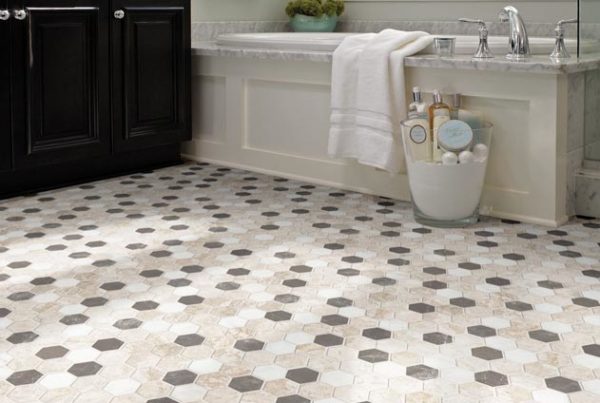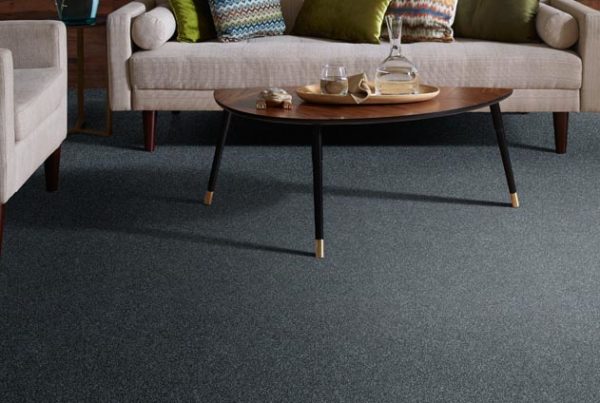Waterproof flooring is trending, and for good reason. Floors that resist stains and spills are easier to clean, last longer, and can even protect your home. Here, we’ll cover a few of the top waterproof flooring types and a few top choices from each.
Waterproof Hardwood
Imagine the beauty of authentic hardwood in your kitchen and bathroom. Traditionally, this hasn’t been a practical choice. Solid wood planks expand when they’re exposed to spills, moisture, or humidity.
Engineered hardwood is better than solid hardwood at repelling moisture. Rather than using a single piece of wood, engineered wood features a multi-layer construction. This innovative design, along with tighter joint technology helps these wood floors maintain their structural integrity during spills and humidity changes.
Waterproof hardwood is a unique hybrid floor. Its waterproof core prevents moisture absorption from below the plank – protecting the floor from damage. Plus the top of the plank has a hardwood layer and is constructed to withstand everyday liquid spills. Its locking mechanism forms a tight seal blocking moisture and spills for days at a time.
Luxury Vinyl
Luxury vinyl has no absorption rate and repels stains from spills. Like waterproof hardwood, most modern luxury vinyl floors also use a nearly watertight locking mechanism that prevents moisture from seeping into the subfloor. This protection lasts even if spills aren’t cleaned right away.
Waterproof luxury flooring comes in several forms:
- Stone Plastic Composite (SPC)
- Wood Plastic Composite (WPC)
- Magnesium Oxide (MgO)
Carpet with Waterproof Backing
Some carpet, like our Performance Destination carpet, have a waterproof backing. Waterproof backing ensures that moisture never seeps through the the backing to the subfloor, where they could cause odors and mildew.
Treatments like R2X and Scotchgard surround fibers with a moisture barrier, blocking spills and stains from soaking into the fibers for a period of time. If it’s from the factory, like R2X, it isn’t just on the surface, it goes all the way around the fiber to the backing. This gives you more time to clean up spills in the event there is an accident. It keeps spill on the carpet’s surface, where they can be wiped away with ease.





